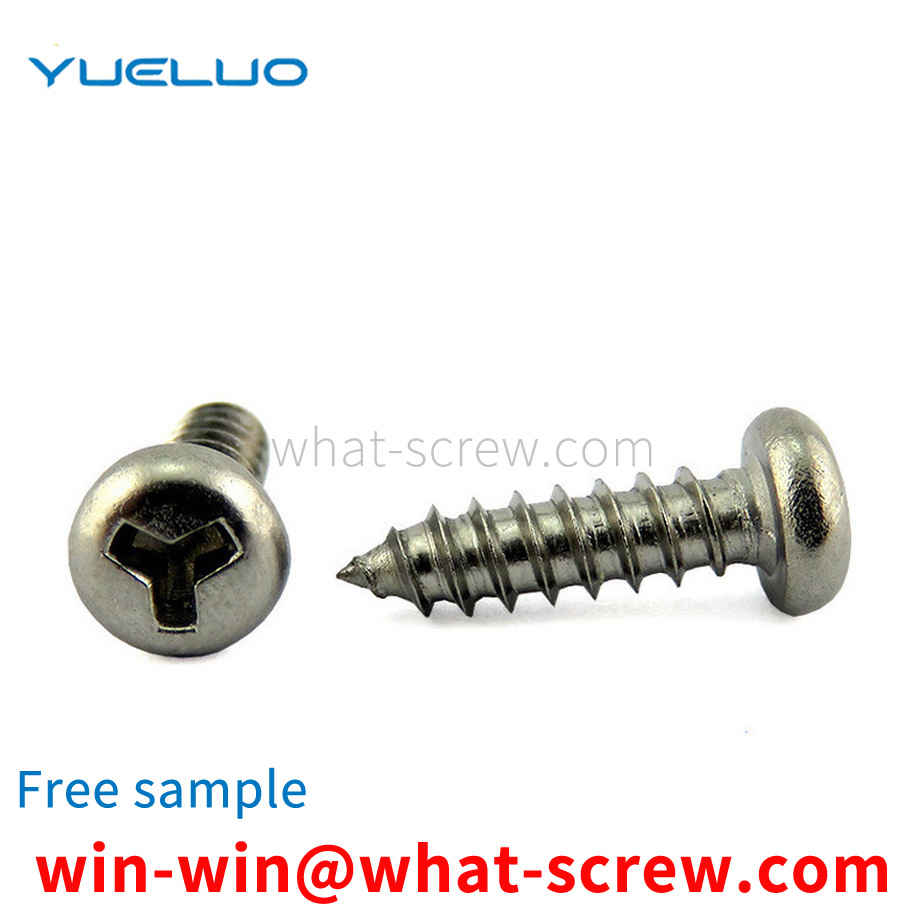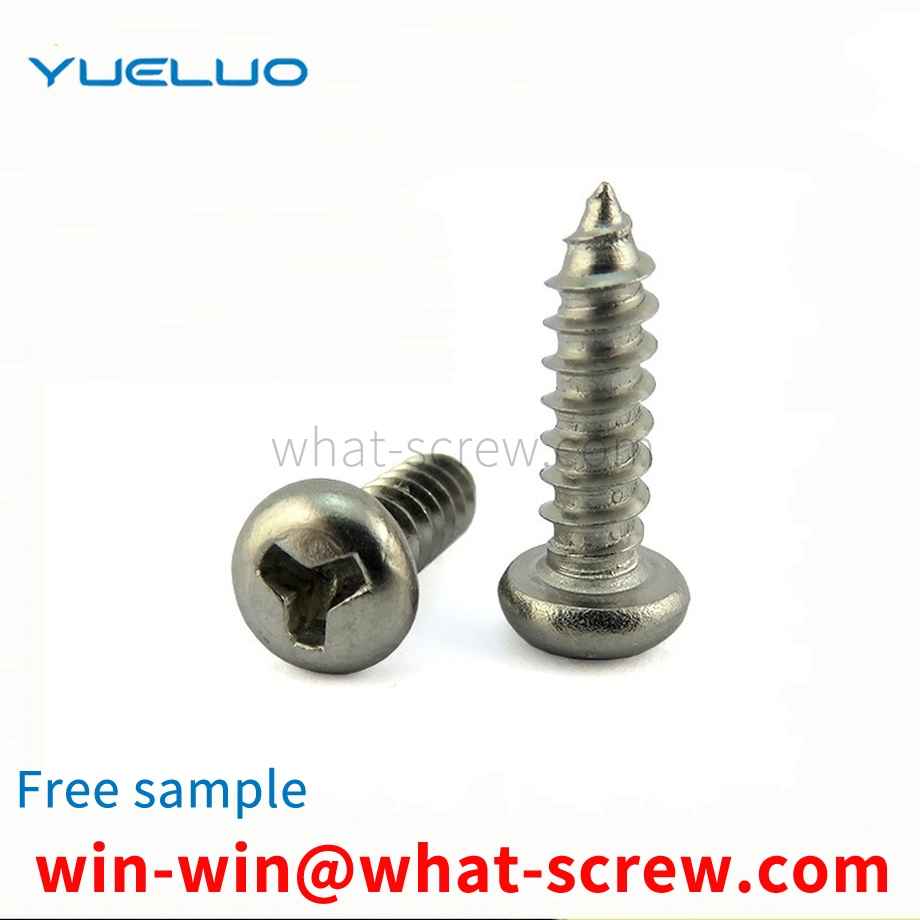Many standoffs are used in sheet metal and aluminum profile processing. However, the existing pressure riveting nut column generally adopts a clearance fit between the pressure riveting and the pressed plate, which has no effect on the general pressure riveting, but it has high surface quality requirements for aluminum profiles, especially Painting aluminum profiles will have a certain impact. First, because the bottom holes of pressure riveting on aluminum profiles are generally processed on ordinary punching machines, a tapered hole with a horn will be generated, which will further increase the gap between the pressure riveting nut columns. Make the mutual tightening force smaller, causing some aluminum profile components to loosen the riveting nut when installing screws, resulting in unqualified surface quality. Therefore, we urgently need a way to reduce the matching gap with the bottom hole of the aluminum profile pressure riveting. The pressure riveting standoff is used to increase the wrapping force between the pressure riveting standoff and the aluminum profile hole.
The quality of electroplating is measured primarily by its corrosion resistance, followed by appearance. Corrosion resistance is to imitate the working environment of the product, set it as the test condition, and perform a corrosion test on it. The quality of electroplating products shall be controlled from the following aspects: 1. Appearance: Partial uncoated, scorched, rough, gray, peeling, crusted, and obvious stripes are not allowed on the surface of the product, and pinholes, pitting, and black plating are not allowed. Slag, loose passivation film, cracks, peeling off and serious passivation marks. 2. Coating thickness: The operating life of fasteners in corrosive atmosphere is proportional to its coating thickness. The general recommended thickness of economical electroplating coating is 0.00015in ~ 0.0005in (4 ~ 12um). Hot-dip galvanizing: the standard average thickness is 54 um (43 um for diameter ≤ 3/8), and the minimum thickness is 43 um (37 um for diameter ≤ 3/8). 3. Coating distribution: With different deposition methods, the aggregation method of the coating on the surface of the fastener is also different. During electroplating, the coating metal is not uniformly deposited on the peripheral edge, and a thicker coating is obtained at the corners. In the threaded portion of the fastener, the thickest coating is located on the thread crest, gradually thinning along the flank of the thread, and the thinnest deposit is at the bottom of the thread, while hot dip galvanizing is just the opposite, the thicker coating is deposited on the inside corners and On the bottom of the thread, mechanical plating tends to deposit the same metal as hot-dip plating, but is smoother and has a much more uniform thickness over the entire surface [3]. 4. Hydrogen embrittlement: During the processing and processing of fasteners, especially in the pickling and alkali washing before plating and the subsequent electroplating process, the surface absorbs hydrogen atoms, and the deposited metal coating then traps hydrogen. When the fastener is tightened, the hydrogen is transferred towards the most stressed parts, causing the pressure to build up beyond the strength of the base metal and producing microscopic surface cracks. Hydrogen is particularly active and quickly seeps into the newly formed fissures. This pressure-rupture-penetration cycle continues until the fastener breaks. Usually occurs within a few hours after the first stress application. To eliminate the threat of hydrogen embrittlement, fasteners are heated and baked as soon as possible after plating to allow hydrogen to seep out of the plating, typically at 375-4000F (176-190C) for 3-24 hours. Since mechanical galvanizing is non-electrolyte, this virtually eliminates the threat of hydrogen embrittlement, which exists in galvanizing using electrochemical methods. In addition, due to engineering standards, it is forbidden to hot-dip galvanize fasteners with hardness higher than HRC35 (Imperial Gr8, metric 10.9 and above). Therefore, hydrogen embrittlement rarely occurs in hot-dip plated fasteners. 5. Adhesion: Cut or pry off with a solid tip and considerable pressure. If, in front of the blade tip, the coating peels off in flakes or skins, exposing the base metal, the adhesion shall be considered insufficient.
Inch Screws C-1: Thread Code: The denominator is marked as 8, and then the numerator is directly called the number. Ex: 1/8 x 0.50 –PPB: 1 Thread screw x 0.50” long, PPB Ex: 5/16 x 0.50 –PPB = 2.5/8 x 0.50-PPB : 2 ½ inch screw x 0.50” long, PPB Ex: 5/32 x 0.50 –PPB =1.25/8 x 0.50-PPB: 1 ½ ½ inch screw x 0.50” long , PPB Ex: 1/4 x 0.50-PPB= 2/8 x 0.50-PPB: 2-point screw x 0.50” long, PPB Note: Coarse or fine pitch is sometimes indicated. UNF: Fine pitch: more commonly used in the electronics industry UNC: Coarse Thread: More commonly used for heavy machinery construction. Ex: 3/8 x 0.50, UNF –PPB: 3 point fine thread screw x 0.50” long, PPB. C-2: Length Code: In inches, must be multiplied by 25.40 is converted to mm. Measured with a buckle gauge, it is a metric thread when it matches the metric thread, and an inch thread when it matches the inch thread. You can also use a caliper to measure the outer diameter and pitch of the thread. The outer diameter of the metric thread is in millimeters, Such as 6, 8, 10, 12, 18, 20 mm, etc., the pitch is also in millimeters, such as 0.5, 0.75, 1, 1.5, 2, 3, etc. The outer diameter of the imperial thread is in inches, (per inch Equal to 25.4 mm) such as 3/16, 5/8, 1/4, 1/2, etc. Therefore, the reading of the outer diameter with a metric caliper often has irregular decimals. The inch pitch is expressed by how many teeth per inch. Set the caliper at 25.4 mm, align one caliper tip with the thread cusp, and the other caliper tip, if aligned with the thread cusp, is an inch thread, and if the thread cusp is not aligned, it should be a metric thread. The tip is printed on the white chalk. The chalk is clear and easy to measure. To measure the metric pitch, you should measure a length, such as 10, 15, 20, millimeters, etc., count how many teeth are included, and calculate the pitch in inches. The specified thread specification is inch thread, such as: G1. Metric threads are specified in metric units of millimeters. Such as: M30. The imperial system is determined by how many teeth there are in one inch (2.54 cm), generally a 55-degree angle. The metric system is the pitch determined by the distance between the two tooth tips, usually a 60-degree angle anchor screw: tighten the machine, etc. Screws for use on the ground. Also called anchor bolts. The difference between British and American screws is difficult to distinguish visually. The difference between British and American screws is that the rolling angle of British screws is 55 degrees, while the rolling angle of American screws is 60 degrees. These two standard screws are used in most screws. It can be used in general, but 1/2 size screws are not allowed, because the standard thread of inch 1/2 is 1/2-12 teeth, while the American system is 1/2-13 teeth.
In order to prevent the waste of materials, those skilled in the art select steel wire as the processing material, and form an annular ring body by drawing the steel wire. Such as the announcement: CN103522009's invention name is a method of processing a retaining ring. The steel wire is used as the processing material, and the processing is carried out by drawing. After the steel wire is drawn and formed, annealing is performed. After the annealing is completed, the forming needs to bundle the steel wire. Since the cross section of the steel wire is rectangular, when it is drawn into the retaining ring base, the cross section changes due to the extrusion of the material, and the inner ring of the retaining ring base will be higher than the outer ring (forming a slope). The deformation is large. At this time, the punching of the opening of the retaining ring base body will produce a slump or cause greater material deformation; therefore, the retaining ring base body needs to be bundled. The bundling process is to prevent the material from being heated more during the quenching process. At the same time, it also has a certain adjustment effect during the quenching process, which makes the inclined surface smaller; but after the quenching is completed, the hardness of the retaining ring base increases, and the punching process for the upper opening will become more complicated.
The lifting ring nut refers to the part that the nut and the bolt or the screw are screwed together for fastening, and it is an original part that all production machinery must use. The lifting ring nut is a commonly used fixing pendant in engineering. There is a thread under the nut, which can be drilled according to its different specifications and fixed by the screw.
We have many years of experience in the production and sales of screws, nuts, flat washers, etc. The main products are: medium carbon 45 steel pins, PVC hard polyvinyl chloride DIN933 screws, stainless steel pan-tilt tripod nuts, screws of various specifications and other products, we can provide products such as You have the right fastener solution for you.



















 Service Hotline
Service Hotline




